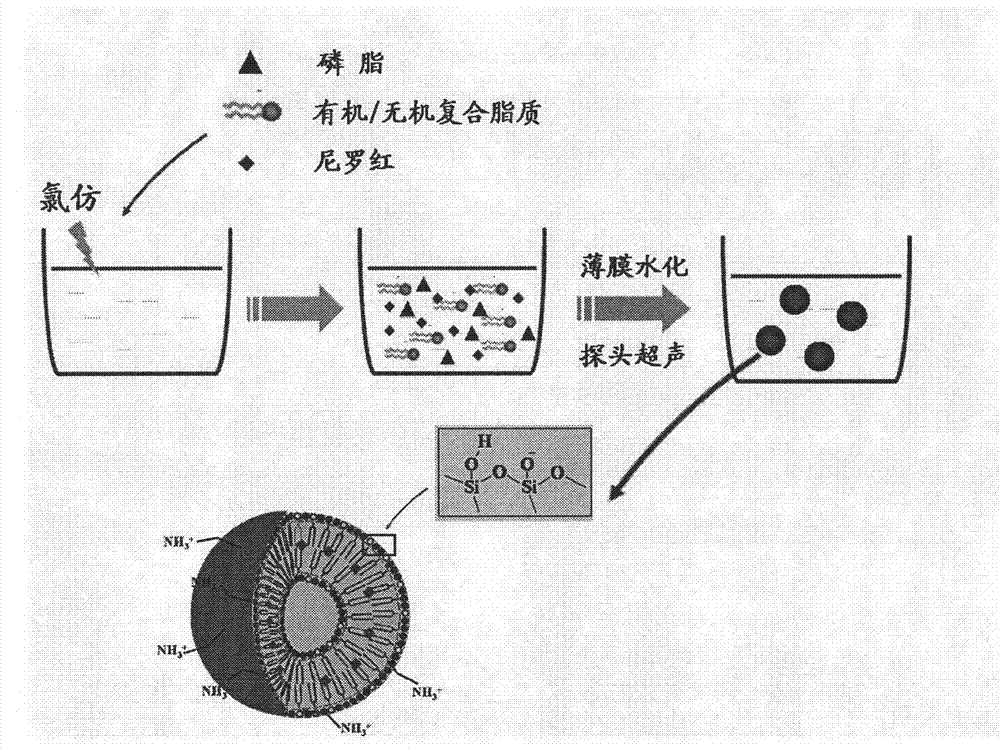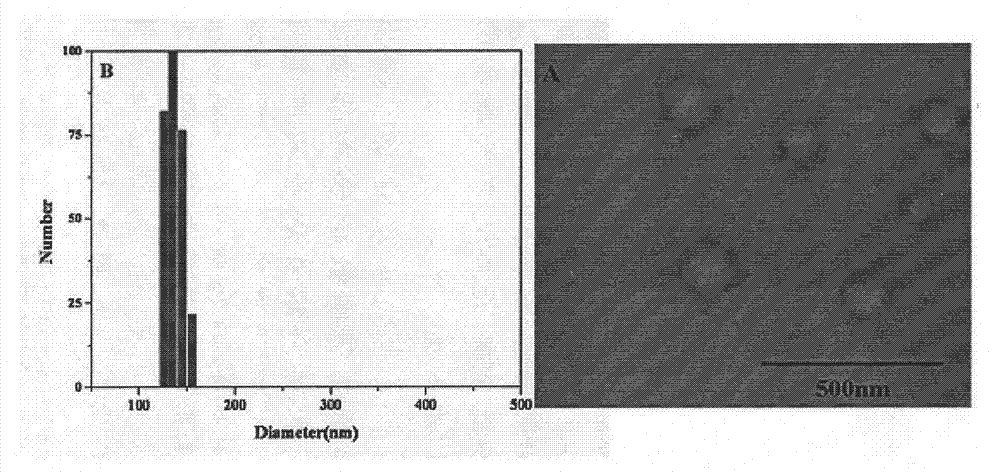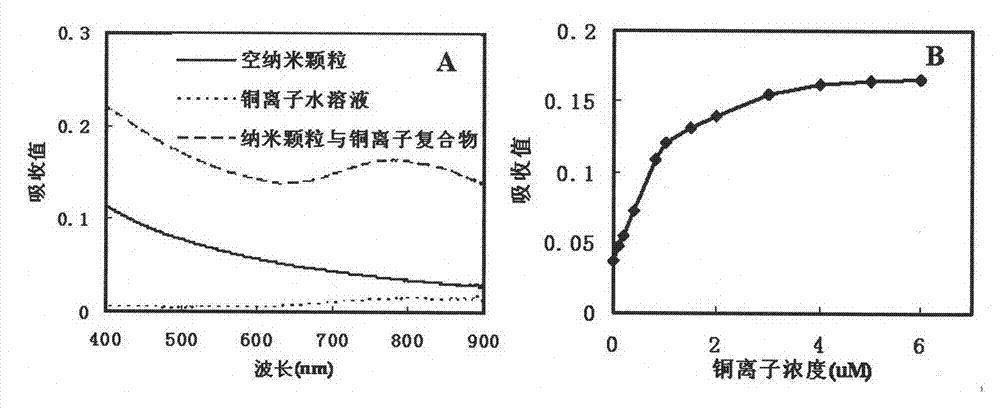Method for detecting copper ions with lipid bilayer-containing organic/inorganic composite fluorescent nanoparticles
A fluorescent nanometer and particle detection technology, which is applied in the intersection of environmental science and biomaterial science, can solve problems such as instability limiting practical application, and achieve the effects of simple operation, mild reaction conditions and simple preparation process.
- Summary
- Abstract
- Description
- Claims
- Application Information
AI Technical Summary
Problems solved by technology
Method used
Image
Examples
specific Embodiment approach 1
[0030] This embodiment is the selection of organic / inorganic composite lipids and 1,2-diglyceride-3-phosphatidylethanolamine (DMPE) in different molar ratios to prepare fluorescent nanoparticles and the most stable ratio, the preparation process of fluorescent nanoparticles Such as figure 1 , the specific method is as follows:
[0031] 1. Preparation of nanoparticles by film hydration method
[0032] Organic / inorganic composite lipids and phospholipids (DMPE) were mixed in six molar ratios (1.5:1, 2:1, 2.5:1, 3:1, 4:1, 5:1) and packed in a pear-shaped bottle In chloroform, dissolve it with chloroform, add an appropriate amount of Nile Red methanol solution, and then use a rotary evaporator to remove the organic solvent and form a thin film on the bottom of the bottle, add deionized water, and hydrate in a water bath at 51°C for 30 minutes, then Sonicate in a water bath for 5 minutes, and finally sonicate with a probe for 3 minutes to prepare nanoparticles with a particle siz...
specific Embodiment approach 2
[0041] Particle size determination and characterization of fluorescent nanoparticles prepared by mixing organic / inorganic composite lipids and phospholipids at a ratio of 2.5:1. The particle size of the nanoparticles was determined with a dynamic light scattering instrument. Add 2ml of nanoparticle dispersion into the plastic cuvette used for measurement, select an argon ion laser, measure the angle at 90°, and measure the particle size and particle size distribution range at 25°C. Nanoparticles were characterized by transmission electron microscopy. Take appropriate amount of nanoparticle dispersion liquid and drop it on the copper grid, and let it dry naturally at room temperature, so that the particles were concentrated and deposited on the copper grid, and then stained with a dye for 18 minutes. After drying, the transmission electron microscope was observed. , the result is as figure 2 .
[0042] The results in this embodiment all prove that the particle size of the pr...
specific Embodiment approach 3
[0043] Determination of adsorption capacity of nanoparticles to copper ions and verification of Nile Red being successfully embedded in nanoparticles.
[0044] 1. Determination of the ability of nanoparticles to adsorb copper ions.
[0045] Thanks to NH 2 The nitrogen atom has a lone pair of electrons, and the copper ion has an empty electron orbit (4s, 4p), so they can form a coordination bond, which forms a copper ammonium complex ion. The specific method is as follows: 10 concentrations of copper ion solutions were prepared between 0 and 6 μM, and the aforementioned thin-film hydration method was used to prepare nanoparticles without embedding Nile Red, and copper ion solutions of different concentrations were added and It carries out ultraviolet absorption measurement, simultaneously a nanoparticle dispersion liquid and 6 μ M copper ion solution are used as contrast, image 3 A is the ultraviolet absorption spectrum of 6μM copper ions. It can be seen from the figure that...
PUM
| Property | Measurement | Unit |
|---|---|---|
| Particle size | aaaaa | aaaaa |
Abstract
Description
Claims
Application Information
 Login to View More
Login to View More - R&D
- Intellectual Property
- Life Sciences
- Materials
- Tech Scout
- Unparalleled Data Quality
- Higher Quality Content
- 60% Fewer Hallucinations
Browse by: Latest US Patents, China's latest patents, Technical Efficacy Thesaurus, Application Domain, Technology Topic, Popular Technical Reports.
© 2025 PatSnap. All rights reserved.Legal|Privacy policy|Modern Slavery Act Transparency Statement|Sitemap|About US| Contact US: help@patsnap.com



